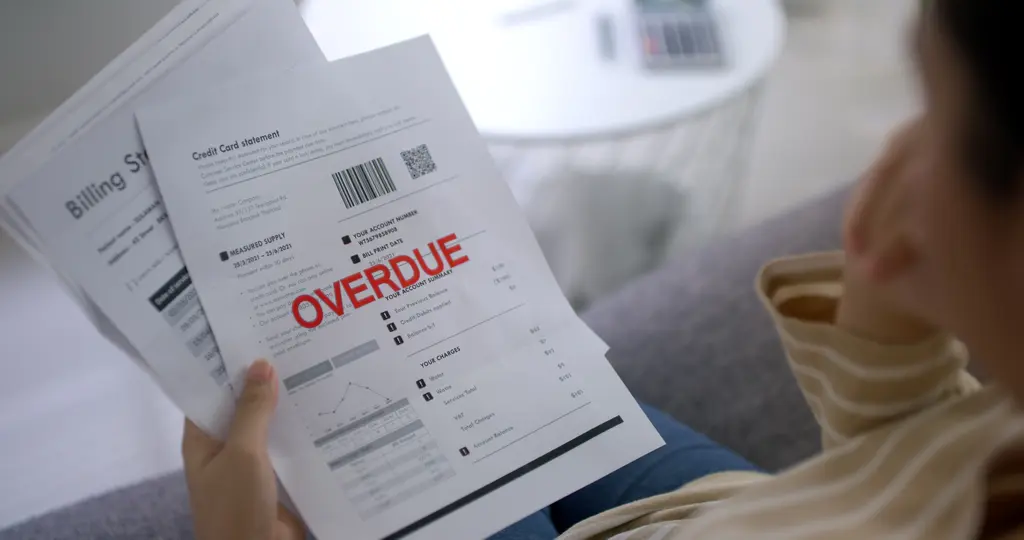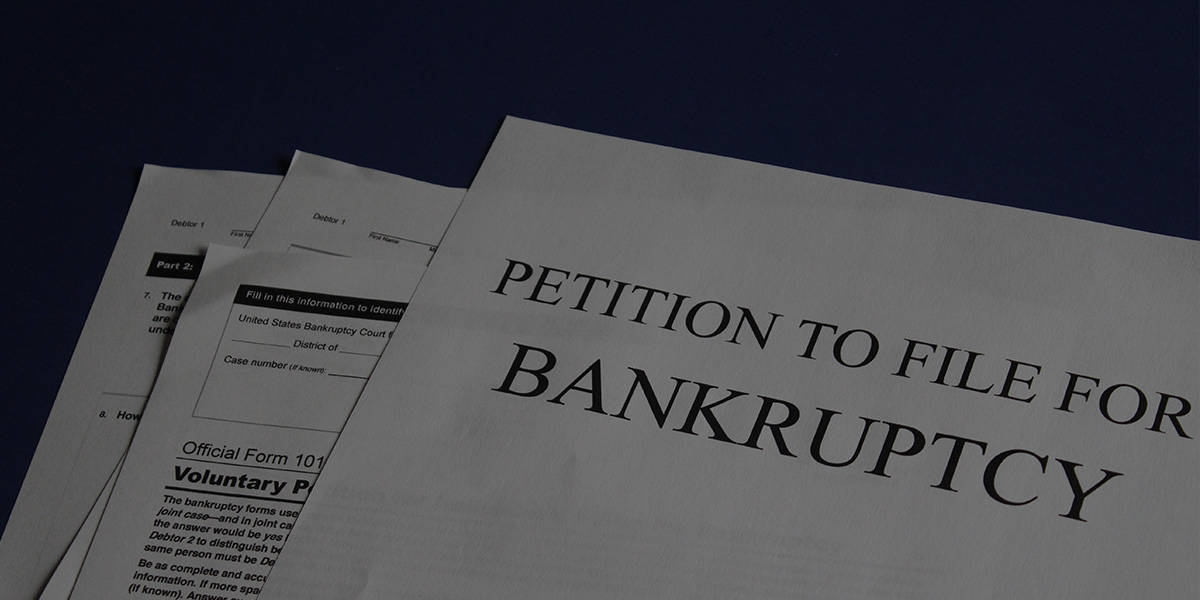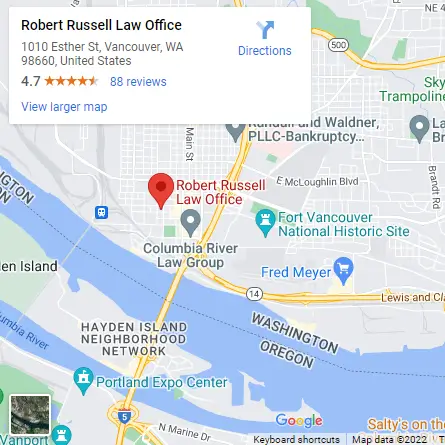 In the Ninth Circuit (which includes Washington and Oregon), the decision that controls student loan dischargeability is In Re Pena, 155 F.3d 1108 (9th Cir. 1998).
In the Ninth Circuit (which includes Washington and Oregon), the decision that controls student loan dischargeability is In Re Pena, 155 F.3d 1108 (9th Cir. 1998).
For my discussion of the meaning and application of this case, click here.
The text of the case is listed below.
DECISION
——————————————————————————–
In Re Ernest J. Pena; Julie Pena, Debtors,
United Student Aid Funds, Inc., Appellant,
v.
Ernest J. Pena; Julie Pena, Appellees.,
Docket Number: 97-16012
——————————————————————————–
Madeleine C. Wanslee, Phoenix, AZ, for appellant.
Ernest J. Pena and Julie Pena, Phoenix, AZ, pro se appellees.
Appeal from the Ninth Circuit Bankruptcy Appellate Panel; Hagan, Jones and Russell, Judges, Presiding. BAP No. AZ-96-1568.
Before: REINHARDT, NOONAN and THOMPSON, Circuit Judges.
DAVID R. THOMPSON, Circuit Judge:
Debtor-Appellees Ernest and Julie Pena sought a bankruptcy court discharge of government insured student loans which were guaranteed by appellant United Student Aid Funds, Inc. (USA Funds). The Penas contended the loans were dischargeable in bankruptcy because payment of them would impose an undue hardship within the meaning of 11 U.S.C. 523(a)(8)(B). The bankruptcy court agreed and discharged the loans. The BAP affirmed. USA Funds now appeals. We have jurisdiction pursuant to 28 U.S.C. 158(d) and we affirm.
STANDARD OF REVIEW
“Because this court is in as good a position as the district court to review the findings of the bankruptcy court, it independently reviews the bankruptcy court’s decision.” Ragsdale v. Haller, 780 F.2d 794, 795 (9th Cir.1986). This court applies a clearly erroneous standard to the bankruptcy court’s findings of fact and reviews conclusions of law de novo. In re Claremont Acquisition Corp., 113 F.3d 1029, 1031 (9th Cir.1997).
FACTS
Debtors and appellees Ernest J. Pena, Jr. and Julie Pena are husband and wife. On July 1, 1994, they filed a petition for relief under Chapter 7 of the Bankruptcy Code. Among the debts from which the Penas sought relief were federally guaranteed student loans incurred by Ernest to attend ITT Technical Institute (ITT) in Phoenix, Arizona. Ernest consolidated his loans under a single note for $9,399.60. The note bears an annual interest rate of 10%. The loans were guaranteed by appellant, United Student Aid Funds, Inc. (USA Funds), a private, non-profit guarantee agency under the Guaranteed Student Loan Program established by the Higher Education Act of 1965, Public Law No. 89-329, November 8, 1965, Title IV, 79 Stat. 1219 (20 U.S.C. 1087-1087-4).
When Ernest completed his studies at ITT, he was awarded a credential as an “Associate of Specialized Technology.” The credential was useless to him. It did not help him in his employment, and it was not accepted by other colleges for course work credit. Nevertheless, the Penas made several payments on the student loans. When Ernest became unemployed, they sought and obtained a 90-day deferral. At the end of that period, they were unable to resume payments and have made no payments since.
Julie suffers from a serious mental disability. Since the age of 13 she has experienced severe stabbing pains and occasionally hears voices. In 1992 she became psychotic and was hospitalized. She has not been able to hold a job longer than six months to a year. In or about August 1995, Julie received roughly $8,000 in a lump sum payment as an award of past-due disability benefits related to her mental condition. The Penas used the lump sum payment to buy a 1976 Oldsmobile Cutlass Supreme automobile and to pay other bills. The Penas said they needed to buy the Cutlass because their other car, a 1972 Buick, did not run well. At the time of trial, Julie was receiving $378 per month in disability payments.
When the Penas filed their bankruptcy petition, they listed net monthly income of $1,178.67 (entirely from Ernest’s employment) and monthly expenses of $2,605. During discovery, the Penas’ income had increased to $1,748.47 (Ernest’s net wages had increased to $1,370.47 and Julie began receiving disability payments of $378.00), while their expenses had dropped to $1,803.78 and they anticipated a further drop to $1,570. By the time of trial, Ernest testified that his wages had increased an additional $1.57 per hour, and expenses, as anticipated, had decreased to approximately $1,570 per month.
The bankruptcy court granted a discharge of the student loans pursuant to the undue hardship provision in 11 U.S.C. 523(a)(8)(B). The BAP affirmed in a published opinion. In re Pena, 207 B.R. 919 (9th Cir.BAP, 1997).
I
THE UNDUE HARDSHIP STANDARD
Government guaranteed student loans cannot be discharged in bankruptcy unless, (A) more than seven years has elapsed between the time the loan first became due and the filing of the bankruptcy petition; or “(B) excepting such debt from discharge … will impose an undue hardship on the debtor and the debtor’s dependents.” 11 U.S.C. 523(a)(8) (emphasis added).1
The Penas do not contend that at the time they filed their bankruptcy petition more than seven years had elapsed since Ernest’s student loans first became due. They contend that if Ernest’s student loans are not discharged, they will be subjected to “undue hardship” within the meaning of 11 U.S.C. 523(a)(8)(B). Neither Congress nor this court has defined the term “undue hardship” in section 523(a)(8)(B). However, “The existence of the adjective ‘undue’ indicates that Congress viewed garden-variety hardship as insufficient excuse for a discharge of student loans….” In re Brunner, 46 B.R. 752, 753 (S.D.N.Y., 1985) (Aff’d by 831 F.2d 395 (2d Cir.1987)).
A. In re Brunner
Brunner established a three-part test for a bankruptcy discharge of a student loan. First, the debtor must establish “that she cannot maintain, based on current income and expenses, a ‘minimal’ standard of living for herself and her dependents if forced to repay the loans.” Brunner, 831 F.2d at 396. The court noted that this portion of the test “comports with common sense” and had already “been applied frequently as the minimum necessary to establish ‘undue hardship.’ ” Id. (citing In re Bryant, 72 B.R. 913, 915 (Bankr.E.D.Pa.1987)).
Second, the debtor must show “that additional circumstances exist indicating that this state of affairs is likely to persist for a significant portion of the repayment period of the student loans.” Brunner, 831 F.2d at 396. This second prong is intended to effect “the clear congressional intent exhibited in section 523(a)(8) to make the discharge of student loans more difficult than that of other nonexcepted debt.” Id. The third prong requires “that the debtor has made good faith efforts to repay the loans….” Brunner, 831 F.2d at 396. The “good-faith” requirement fulfills the purpose behind the adoption of section 523(a)(8). Brunner, 46 B.R. at 754-55. Section 523(a)(8) was a response to “a ‘rising incidence of consumer bankruptcies of former students motivated primarily to avoid payment of education loan debts.’ ” Id., (quoting the Report of the Commission on the Bankruptcy Laws of the United States, House Doc. No. 93-137, Pt. I, 93d Cong., 1st Sess. (1973) at 140 n. 14). This section was intended to “forestall students … from abusing the bankruptcy system.” Id. The Brunner test has been adopted by the Third and Seventh Circuits. In re Faish, 72 F.3d 298, 306 (3d Cir.1995) cert. denied, 518 U.S. 1009 , 116 S.Ct. 2532, 135 L.Ed.2d 1055 (1996); Matter of Roberson, 999 F.2d 1132 (7th Cir.1993). Although some confusion exists regarding the status of Brunner in the Sixth Circuit,2 it has been applied by the bankruptcy and district courts in every other circuit.3
Notwithstanding this wide acceptance, the BAP in the present case preferred the test set forth in In re Cheesman, 25 F.3d 356 (6th Cir.1994). Pena, 207 B.R. at 922. The BAP stated, “The Cheesman standard … is the better test…. The Debtors should not be required to prove that ‘exceptional circumstances’ exist precluding an improved financial status in the future.” Id. B. In re Cheesman
Although the Sixth Circuit in Cheesman apparently applied Brunner to support its conclusion that the debtor did not meet any standard for undue hardship, the Sixth Circuit did not adopt any particular test. Cheesman, 25 F.3d at 359. Nor did the Cheesman court engage in any analysis regarding the various undue hardship tests then in use. Cheesman, however, did use slightly different language in applying the Brunner test to the Cheesman facts. Id. at 360.4
It does not appear that the Sixth Circuit in Cheesman was proclaiming a test distinct from Brunner. In any event, we join the Second, Third and Seventh Circuits and adopt the Brunner test to determine whether, pursuant to 11 U.S.C. 523(a)(8)(B), a debtor in bankruptcy may discharge a student loan.
II
APPLYING BRUNNER
A. Maintaining a Minimal Standard of Living on Current Income and Repaying the Loans
The bankruptcy court found that the Penas’ net monthly income totalled $1,748 (Ernest’s take-home pay of $1,370 plus Julie’s disability payments of $378). Although USA Funds points out that the bankruptcy court did not include an increase in Ernest’s wages that occurred between discovery and the time of trial, this does not suggest that the bankruptcy court was clearly erroneous in its finding. There was evidence before the bankruptcy court that Ernest’s income fluctuated. Accordingly, we accept as not clearly erroneous the bankruptcy court’s finding that the Penas’ monthly net income was $1,748.
USA Funds also challenges the bankruptcy court’s finding of the Penas’ monthly expenses. USA Funds contends the bankruptcy court clearly erred by averaging the differing monthly expense figures the Penas provided at various stages of the proceeding–at the time they filed their Chapter 7 bankruptcy schedules, at the time they responded to interrogatories, and at the time of trial.
We cannot say the bankruptcy court clearly erred in averaging the Penas’ monthly expenses. The method for calculating a debtor’s average monthly expenses is a matter properly left to the discretion of the bankruptcy court. Although the Brunner test looks to the debtor’s “current” income and expenses, where the evidence suggests that the debtor’s income or expenses tend to fluctuate, it is not inappropriate to average figures over a reasonable period of time. To require strict reliance upon conditions existing at the moment of trial could result in an accurate snapshot but a distorted picture. We do not believe Congress intended to impose upon the debtor or the bankruptcy court such a narrow focus.
Using its averaging analysis, the bankruptcy court found that the Penas’ expenses “on a monthly basis range[d] between $1,570 and $1,993.” The court selected the $1,570 figure by using the Penas’ answer to Interrogatory 20 in which they stated their expenses were anticipated to drop to that amount. The court selected the $1,993 figure by combining portions of the Penas’ trial testimony with figures they provided on Schedule J of their bankruptcy petition. The court then averaged in the figure of $1,804 which was the amount of the Penas’ actual monthly expenses at the time they answered Interrogatory 19. The average of these three figures is $1,789, and that is the figure the bankruptcy court found to be the Penas’ average monthly expenses.
Subtracting the Penas’ average monthly expenses ($1,789) from their net monthly income ($1,748), the Penas were faced with a monthly deficit of $41. Clearly, in these circumstances the Penas could not maintain a minimal standard of living and pay off the student loans.
B. Additional Circumstances
The bankruptcy court did not state which of its findings it considered applicable to the second prong of the Brunner test. However, two factual findings are relevant to this portion of the analysis: Julie’s disability and the fact that Ernest’s earning potential was not increased by his ITT education. USA Funds challenges these findings.
i. Julie’s Disability
Based on Julie’s testimony and a letter notifying her of her disability benefits, the bankruptcy court found that Julie suffered from a “mental medical condition …. variously diagnosed as depression, manic depression (bipolar disorder), schizophrenia and paranoia,” which “prevents long-term stability.” USA Funds argues that because this testimony was uncorroborated, it is insufficient to establish a medical disability. The cases relied upon by USA Funds do not support this argument.
In re Sands, 166 B.R. 299, 311 (Bankr.W.D.Mi.1994), held that although a diabetic debtor’s uncorroborated testimony of past medical problems did explain his lack of employment prior to trial it did not establish a “disability that will persist for an extended period of time into the future.” (emphasis added). The distinction between Sands and the present case rests in the nature of the disabilities. In Sands, the debtor had pretrial medical problems requiring surgery which interfered with his employment. Id. There was apparently no indication that the debtor had continuing problems other than his diabetes. Id. In contrast, Julie suffers from a serious ongoing mental illness which will likely continue to interfere with her ability to work. She testified that since the age of 13 she has suffered from stabbing pains and she occasionally hears voices. In 1992, she became psychotic and had to be hospitalized. Due to her disability, she has not been able to hold any job for more than six months to a year. According to Julie, the administrative judge who awarded her disability benefits found her to be permanently mentally disabled. Although this was hearsay evidence, USA Funds did not object.
USA Funds also relies on portions of the lower court opinions in Brunner and In re Garrett, 180 B.R. 358 (Bankr.D.N.H.1995). In Garrett, one of the debtor’s doctors provided a letter which stated in part, ” ‘Avoid heavy lifting (clerical work, e.g. typing okay).’ ” Garrett, 180 B.R. at 364 (quoting letter from Dr. Taylor-Olson) (emphasis added). The court held, “Based on the evidence before the court, the court finds that Garrett’s medical problems would not prevent her from obtaining the type of employment she is most suited for.” Id. In Brunner, the district court reversed the bankruptcy court’s disability finding because it was “clearly erroneous,” not because it relied on uncontroverted testimony by the debtor. Brunner, 46 B.R. at 757. The court noted the debtor “testified that she was capable of working.” and that, “Although appellee testified that she was consulting a therapist, there is no evidence in the record that her depression and anxiety impair her capacity to work. She has no ‘impairment’ in any relevant sense of the word.” Id. (emphasis added).
The present case is clearly distinguishable. In her testimony, Julie described her serious, ongoing mental disability which continues to prevent her from obtaining meaningful permanent employment. Further, her testimony is corroborated by an eight thousand dollar back disability award, continuing disability payments and the letter notifying her that she would receive disability payments. The bankruptcy court did not clearly err in its conclusion that Julie has an ongoing disability which prevents her from being employed.
ii. Ernest’s Lack of Job Potential
USA Funds contends the bankruptcy court erred by considering evidence regarding the value of the ITT education. The Brunner court stated that “[c]onsideration of this factor is not only improper, it is antithetical to the spirit of the guaranteed loan program….” Brunner, 46 B.R. at 757.
We agree that consideration of educational value as a separate factor in analyzing undue hardship would improperly place too much emphasis on this evidence. However, as part of the second prong analysis, the value of Ernest’s education is relevant to his future ability to pay off the student loans. The bankruptcy court did not err in considering that Ernest’s income was not likely to increase as a result of his ITT education.
C. Good Faith
USA Funds finally contends that the bankruptcy court erred in finding that the Penas exhibited good faith in attempting to pay back the student loans.
The bankruptcy court found, “The debtors have made payments on the loans. After being laid off from Honeywell, the debtors were given a 90-day deferment, but then were unable to meet their obligations and filed chapter 7.” These facts support the bankruptcy court’s finding of good faith. They are quite different from the facts found in Brunner. There, the debtor failed to establish good faith because she “filed for discharge within a month of the date for the first payment of her loans came due, …. made virtually no attempt to repay, [and never] requested a deferment of payment, a remedy open to those unable to pay because of prolonged unemployment.” Brunner, 46 B.R. at 758.
USA Funds also argues that the Penas’ lack of good faith is demonstrated by the fact that when they received a lump sum payment of approximately $8,000 in back disability benefits for Julie, they bought a car and paid other bills.
Although there was no testimony regarding the purchase price of the car, it was approximately 20 years old when they bought it. With regard to the use of part of the lump sum payment to pay other bills, according to Ernest’s testimony at trial, the Penas had “unsecured debts totalling $43,360 of which the student loan is approximately $8,685, excluding interest.” USA Funds does not suggest why good faith would have required the Penas to pay the student loan debt prior to paying down portions of their other debts, when the other debts ($43,360 minus $8,685) were approximately four times the amount of the student loans.
We conclude the bankruptcy court did not clearly err in finding that the Penas exhibited good faith in attempting to pay back the student loans.
CONCLUSION
We adopt the Brunner test as the test to be applied to determine the “undue hardship” required to discharge student loans in bankruptcy pursuant to 11 U.S.C. 523(a)(8)(B). Applying this test, the bankruptcy court did not clearly err in finding that (1) the Penas could not maintain a minimal standard of living and repay their student loans, (2) their unfortunate financial situation was likely to continue for a substantial portion of the repayment period, and (3) they made a good-faith attempt to pay the loans. The Penas established “undue hardship” within the meaning of 11 U.S.C. 523(a)(8)(B), and they are entitled to a bankruptcy discharge of their student loans.
AFFIRMED.
————————————————————-
1 The Penas had one dependent at the time of trial.
2 The Sixth Circuit has not yet adopted a test for determining undue hardship but referred to and applied Brunner in In re Cheesman, 25 F.3d 356 (6th Cir.1994) (noting the existence of several undue hardship tests, the court rephrased Brunner and applied its test to support the conclusion that the student loans at issue “were dischargeable under any undue hardship test the [bankruptcy] court may have used….”). The bankruptcy courts in the Sixth Circuit have since applied “the Brunner test as restated in Cheesman.” See, e.g., In re Dolph, 215 B.R. 832, 836 (6th Cir.BAP, 1998).
3 See, e.g., 1st Cir.: In re Garrett, 180 B.R. 358 (Bankr.D.N.H.1995); 4th Cir.: Commonwealth of Virginia, State Educ. Assistance Authority v. Dillon, 189 B.R. 382 (W.D.Va., 1995), In re Ammirati, 187 B.R. 902 (D.S.C.1995), aff’d 85 F.3d 615 (4th Cir.1996), In re Walcott, 185 B.R. 721 (Bankr.E.D.N.C.1995); 5th Cir.: In re Coveney, 192 B.R. 140 (Bankr.W.D.Tex.1996), In re Raisor, 180 B.R. 163 (Bankr.E.D.Tex.1995), In re Stebbins-Hopf, 176 B.R. 784 (Bankr.W.D.Tex.1994); 8th Cir.: In re Rose, 215 B.R. 755 (Bankr.W.D.Mo.1997); 9th Cir.: In re Shankwiler, 208 B.R. 701 (Bankr.C.D.Cal.1997); In re Hinkle, 200 B.R. 690 (Bankr.W.D.Wash.1996); In re Rosen, 179 B.R. 935 (Bankr.D.Or.1995); In re Raymond, 169 B.R. 67 (Bankr.W.D.Wash.1994); In re Lynn, 168 B.R. 693 (Bankr.D.Ariz.1994).
4 Here are the two formulations, side by side, of the Brunner and Cheesman tests:
Brunner Cheesman1) “the debtor cannot maintain, based on 1) “the [debtors] could not maintain current income and expenses, a a minimal standard of living for ‘minimal’ standard of living for their family if they were required herself and her dependents if forced to repay their loans.” to repay the loans;”2) “additional circumstances exist 2) “[T]here is no indication that the indicating that this state of affairs [debtors’] financial situation will is likely to persist for a significant improve in the foreseeable future.” portion of the repayment period of the student loans;”and and3) “the debtor has made good faith 3) “There is no evidence that the efforts to repay the loans.” [debtors] did not act in “good faith.”Brunner, 831 F.2d at 396. Cheesman, 25 F.3d at 360.






